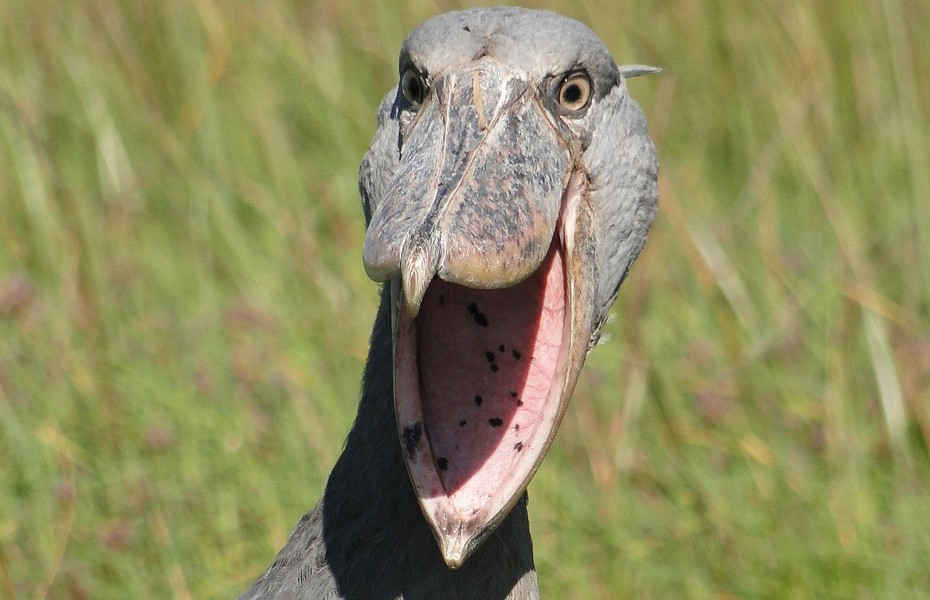Facts About Shoebill Stork
Facts About Shoe Bill Stork: Were you aware that the shoe bill stork is a threatened species of bird found in Rwanda‘s Akagera National Park? Indeed, when you go birding in Rwanda, you will be able to witness one of the most striking bird species. Participating in the many activities offered by Akagera National Park will allow you to witness the park’s marshes and bird species throughout your visit. This will be an incredible experience. You will learn about and be able to observe several facts regarding the shoe bill stork throughout your visit to the park.

They are a hostile species.
When you visit the marshes, you can witness the young shoe bill storks fighting among themselves as a result of their hunger for the mother’s attention. These birds are highly violent toward one another. When they are not fighting, though, they are seen to be shy, preferring to be alone themselves, and they stay within their territory. The dominant bird species can battle with the lesser young until they leave the nest to live on their own. Typically, storks fight when they are between the ages of two months and a year. The larger dominant offspring will pick fights with nearly every young bird in the nest.
They are really courageous.
The shoe bill stork exhibits incredible bravery by taking on any animal or bird species, regardless of size or strength. Because of the aggressiveness of the shoebill stork, which makes the marshes more dangerous for the animals that inhabit them, you can see bird species fighting over even the smallest irritations, such as animals blocking their view or sight. It’s also entertaining to watch the shoebill stork engage in combat with crocodiles, and on rare occasions, the crocodiles are seen avoiding the shoebill stork due to their aggressiveness.
Patient species
The shoe bill stork is known to spend hours standing in the water while hunting, patiently waiting for weak prey to kill and devour. During the boat trip on Lake Ihema in Akagera National Park, you may observe the bird species that often feeds at night. They can be observed sitting perfectly and still blending in the darkness, waiting for their food in the marshes.
Limit noise
The shoe bill stork, in contrast to the other bird species with which they coexist, is a noisemaker. However, when it does make noise, it produces a sound akin to that of a machine gun, namely loud, terrifying popping noises, which are typically audible during prey-gathering. They will also be heard generating noise to entice the other during mating.
Lifespan
The shoebill stork is an unusual bird species because of its outstanding life span of up to 35 years, which is fairly remarkable for a bird of that size. Additionally, the stork often has seven generations, which is also extremely impressive.
The beak resembles a shoe.
The shoe-shaped beak, which is one of the most attractive characteristics of the species, gives rise to the name of the bird species. It is roughly 24 centimeters in length and 20 centimeters in width. The shoe beak has a downward-curving hook at the end that is used to hook fish. It is used to swallow tiny animals in a single mouthful.
Height and wings
The shoe bill stork can reach a height of 1.5 meters on its two feet, which is quite tall in comparison to the other bird species in the area. Additionally, the wings are five times greater than the body masses due to their length, reaching up to 2.5 meters. The wings, which have a maximum flap rate of 150 per minute—much slower than the average bird’s 3500 flaps per minute—can be utilized to frighten and intimidate predators such as crocodiles.



